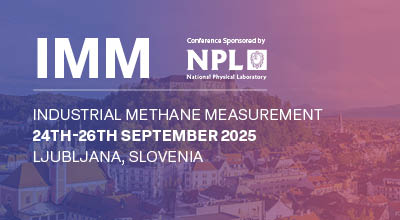| Abstract Title: | A tale of two reconciliations: Recent experiences from conducting top-down methane measurement |
| Presenter Name: | Dr Peter Evans |
| Co-authors: | Dr Brendan Smith Mr Charles Tavner Dr Aslan Bashir-zadeh Ms Pauline Ruddy Mr Raj Bose Mr Dan Touzel Ms Charlotte Withers Mr Jalal Rahimov Mr Nijat Hasanov Mr Madhusuden Agrawal Mr Paul Page Mr Brendan Smith Ms Abigail Corbett Mr Garrett John Mr Charles Tavner Mr Ed Clay Mr Chris Adams Mr Aslan Bashir-zadeh Mr Lala Aliyeva-Klychkova |
| Company/Organisation: | BP |
| Country: | United Kingdom |
Abstract Information :
Accurate measurement of methane is the basis upon which real reductions in emissions can be achieved, by focusing resources where they will have greatest impact. Moreover, accurate reporting is critical if these efforts can be confidently demonstrated. In this context, the additional measurements that underpin new reporting requirements such as OGMP2.0 Level 5 in which reported emissions are verified by means of a second independent method form part of a process of continuous improvement where the fit between reported and verification measurements should improve with each reporting cycle.rnrnIn this paper we present recent measurements taken in preparation for verification measurements conducted in complex oil and gas production environments. The first comprise measurements taken in an offshore setting using an autonomous fixed wing aircraft equipped with a closed-cavity methane spectrometer. Repeat measurements were performed over a 2-day period. The results are statistically indistinguishable from reported values of 20kgh for the corresponding moment in time at which the data was collected and the reported values can therefore be considered as reconciled. Measurements were conducted during a period that is typical for steady-state operations. We compare the results to high resolution operational data and annual emissions data to explore how representative a measurement of this kind is, the implications for long-term sampling strategies and the importance of continually tracking major sources of methane such as flares. rnrnThe second study comes from an onshore setting in which the same methane sensor was deployed by rotary drone operated by a pilot. Here, the size of the facility approx. 4 square kilometres combined with complex and rapidly changing local weather patterns makes whole facility measurements challenging. By dividing the site into a series of zones, akin to the functional elements concept, a composite emission profile and verification measurement is obtained. Total emissions for the facility are higher than its offshore counterpart but the total volume of gas being processed is also much greater. The results show that top-down measurement and reported emissions for the site agree at the facility scale but also reveal that it is important to explore individual components that make up the total reported figure in order to prioritise reduction opportunities. Based upon these results we can also use fluid dynamic modelling to investigate how methane would disperse from the sites and the implications for building an effective sampling plan.rnrnPeter Evans1, Pauline Ruddy1, Raj Bose1, Dan Touzel1, Charlotte Withers1, Jalal Rahimov1, Nijat Hasanov1, Madhusuden Agrawal1, Paul Page1 Brendan Smith2, Abigail Corbett2, Garrett John2, Charles Tavner3, Ed Clay3, Chris Adams3, Aslan Bashir-zadeh4, Lala Aliyeva-Klychkova4rnrn1 bp Sunbury on Thames, Middlesex TW16 7LN, UKrn2 SeekOps 1205 Sheldon Cove, Building 1, Suite A, Austin, TX 78753, USArn3 Flylogix- Merlin House, 4 Meteor Way, Fareham, Lee-on-Solent, PO13 9FU, UKrn4 Olimp UAV, Baku, White City, First Yashil Ada str. 7, Azerbaijanrnrn

